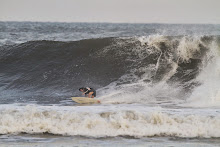
We’ve been building some enclosure cages to try to experimentally test some alternative hypotheses in the field. Most importantly, maybe lobsters don’t really eat sea hares in nature, even in preserves. Maybe our experiments simply show that they eat sea hares dropping out of the water column. This is Rob’s alternative hypothesis. It is part of a larger question: Just how devastating ARE lobsters on the ecology of sea hares? We rarely see sea hares bigger than a cm or so out at Catalina, and have never seen them yet in the preserve. Is it possible that this rarity is driven by lobsters? So we (actually, John and Dan) built a couple of cages in which we intend to enclose lobsters with sea hares. We predict that when we put some sea hares in the cage for a day or so and then put in one or two lobsters that attacked the field-proffered sea hares, the lobsters will readily eat one or more sea hares in a very short time (a couple of days).
Cool idea, eh? If they consume the sea hares, it strengthens our case. If they don’t, the idea that we are studying an artifact is strengthened. Remember, anytime you feel scared for your hypothesis you are doing the right research.
If the lobsters do end up eating all the sea hares in the enclosure, we would say, ok, then we’d put in lobsters that don’t attack in the field. The effect of these wimpy lobsters on the sea hares should be weaker or delayed. Let’s do it!
Three days ago we tested the cage. We had tightly wrapped it on all sides with netting of 1-inch mesh. It looked good. I used some lashing tricks I learned from my Dad on Siwash to keep the netting tight on the frame. Dan and I sank the puppy right next to Siwash (close to ample supplies of attacking lobsters), and covered its floor with rocks. A fun underwater job, one of the few that we could do in the daylight. We put three sea hares in to make sure they didn’t go anywhere in the absence of lobsters. A trivial “pre-test”. The next day, John and I dropped down on the cage to find out whether the sea hares were standing on their tails waving for food, or hunkered down inbetween the rocks.
What we found was NO sea hares. Gone. All three of them. Damn. What the hell? Where are they? We took out every single rock and still no trace of a sea hare. Could they have slithered out of 1-inch mesh? The answer if YES. RATS! All that work, to build and wrap the cage. Arggh. Why the hell didn’t we try to enclose them at home before we came? Now we’ve got to pull out the cage and wrap it with a MUCH finer mesh.
This is all way depressing. Experiments deepen your science. We want some results. Failing to do an experiment deepens your depression. Shit, we are missing a chance, and just cause we weren’t thinking. We’ve only got 5 more weeks. What if the experiment takes 6?
Dan is bringing out finer mesh today, and John and he will retie the cage, and deploy it again. Those slithery sea hares.
Yesterday, we were offering sea hares to our captured lobsters in 3 foot deep tanks up near the dive lockers. We are finding that the lobsters that attacked in the field are much more prone to attacking sea hares in these tanks as well. They do so within a half an hour to a couple of days (non-attackers need to be held a couple of weeks before they attack in these tanks). That is a good finding. It means the difference in field behavior depends on the sea hare, not its immediate context (cave nearby, big kelp bass). In the process of doing these lab presentations we figured out we could fish out the sea hares with a hand net. Actually the fish net had pretty fine mesh. About 1 inch.
Once, after leaving the recovered sea-hare in the hand net for maybe ten minutes while we set up the next presentation, we noticed the sea hare with its head and half its body hanging outside the net. Hmm… I guess 1 inch mesh isn’t even close!

No comments:
Post a Comment